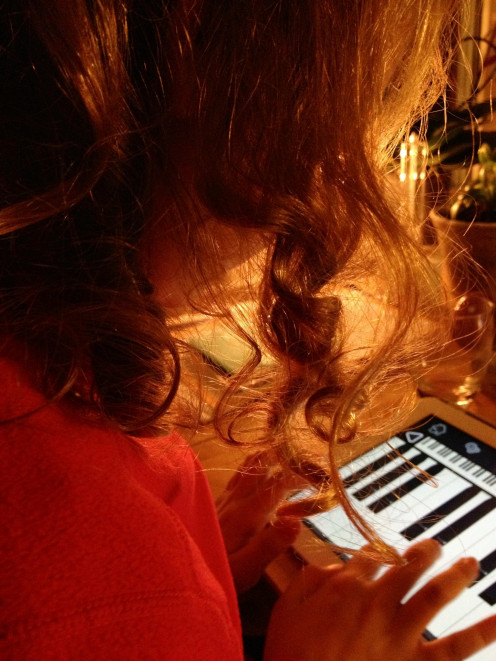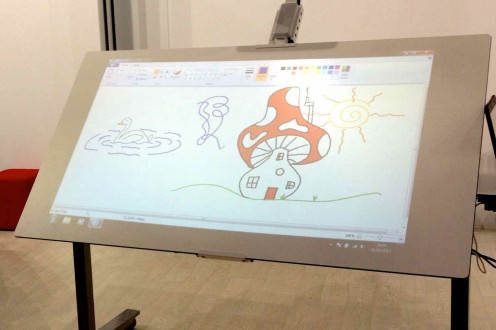Why Should a Teacher Use Blended Learning?
What is Blended Learning?
Blended Learning is a mix of online education AND face-to-face education.
Providing education online has some benefits including time flexibility, and the ability for the teacher to make detailed follow ups on all students. There are a lot of methods to use (for some examples, see more about ICT in my hub "Why using ICT for education and how to practice it?"). Education online certainly has its weaknesses too. To mention one weakness: the possibilities to communicate can, depending on the setup, be limited. Another advantage is that some things will be easier to practice when you actually meet. For example:
- Group dynamics
- Solving tricky issues together
- Learning and practicing practical skills like how to maintain a valve or how to solve a conflict.
- And a lot more
The great thing about Blended Learning is that it becomes possible to use the best from either online education or face-to-face. Choose the method that supports the task and subject!
Another thing that highlights the positive effects of Blended Learning is the theories about different learning styles.
Example from one theory of learning styles (Visual-see, Auditory-hear, Kinesthetic-do):
As a teacher, you get more opportunities to provide a variety in teaching methods and material when you use Blended Learning. Online you can see, write, listen; while in class you can perform more hands on activities. Even here, it is possible to provide a mix; there can be someone drawing pictures, someone instructing and a third person performing some task. Here it is possible to mix creative teams to do classwork while simultaneously having each student’s individual learning in focus.
How can I set up a class based on Blended Learning?
There are different ways to do this. I will mention how to take the factors “before class,” “during class” and “after class” in consideration when creating a lesson plan. I will also finish this hub with some connections to the “Flipped Classroom”.
Before class
A way to give students more opportunities and stimulation for their learning is to think of what shall be done before class, during class and after class? This way of thinking builds the foundation for some education activities before you actually meet in class, and even includes some activity after. The reason behind this is to offer more variation by using different methods, and to give the teacher more time for support and feedback instead of lecturing 08.00-16.00.
Start your lesson plan by consider what should be done before class. Some suggestions:
- Read some documents, write questions
- Watch movies for example; lectures that the teacher have recorded or other movies on the subject.
- Write down the expectations
- Write down prior experiences and education (great way to find out about the student’s knowledge when they come to class)
- Make a presentation

During class
All of the activities above can be done online, right? It is even beneficial to perform them online. Students can plan their time and decide when they are going to do the activities, just make sure they finish before class. Here, the teacher’s role is to give feedback and support online. This period gives the teacher time to prepare for class by collecting all expectations, questions or whatever. This will give a great input for planning face to face, or “during class”. A great benefit is that we get a more dynamic experience in class.
During class, it is then possible to have a lot of different activities where the students interact, instead of just sitting through lecture. Some suggestions:
- Cases to solve
- Group-based discussions on the tasks performed online
- Mini lectures performed by students
- Experiments
- Interviews
- Make movies, posters and so on to show what has been learned
Examination can be performed in class but can even be a part of “after class”.

After class
The students can go online again where they find more tasks. Maybe there is even an examination or some quizzes. Suggestions on activities after:
- Examination, can be performed as a larger task, presented in a blog, a wiki or in some other way
- Quizzes to check understanding
- Evaluation and input for improvements
- Making questions or tasks for next terms class
Do I have to use Blended Learning this way?
No, of course not! These are only suggestions of possible ways to work with Blended Learning. Examination sure can be done wherever you as a teacher think is best. It can be performed in front of an audience, by email, by printing a book and so on. Some things suggested above will do best face-to-face of course, but that is up to every teacher to decide for his/hers class.
As a teacher you should be able to experiment and feel free to use your pedagogical skills to perform lessons in the way you think will do best for the students. It is in the end about their learning.
Where do you see benefits performing education online?
What about “flipped classroom” then?
Flipped classrooms are built on the same principles as described under “before class, during class and after class.” In other words, the teachers’ focus is moved from ordinary lectures in class to more supporting activities. Focus is on variation, support and learning.
The teachers focus while practice flipped classroom are:
- To supply the students with material that will support them in their work online
- Give immediate feedback and support during the work online
- Look for high quality material
- In class, the teacher gives some introduction and then tasks for the students to work with
- In class, focus can be on the students and on things in the content that are difficult to understand
- Focus on exercising and dialogue
For methods and ways to work in the “Flipped classroom,” take another look at the suggestions for “during” above.
Try, mix and find your way!
Finally, remember: Lectures do not ensure that the students have actually learned what you told them. To learn is a verb. That indicates that something must be performed by someone –the students. As a teacher you should help them in this process. When I was a child and went to school, my teachers just lectured all day. When it was time for test or examination, I sat home and tried to memorize everything in the book. Just guess how much of that I remember today? Did I learn the things I was told? The answers are, unfortunately, nothing and no… What do I remember from school? I remember when we made a French breakfast in our French class, I remember making an essay in High school. And so on.
It's important to see that teaching with ICT require some new mindset. Focus is transferred from the teacher and teaching to the students and learning. A common mistake is to use traditional pedagogy, just "teaching" online instead of in class. Flip it and let the students prepare themselves before they attend to class.
Today, the opportunities are almost unlimited and as a teacher, of course you can lecture! But there sure can be some assignments for the students. They can then try on their own and make their own learning happen.
If you want to read more about ICT, look at this hub by Kerlund74
- How to Improve my Technological Knowledge for Use in Class?
The most common issue in using ICT (information and communications technology) is that many teachers today don’t possess the necessary technological knowledge. - Why using ICT for education and how to practice it?
ICT means Information and communications technology. ICT is getting more and more common in schools and training, but what's the big deal? I will try to illustrate how to practice ICT in education.
© 2014 kerlund74








